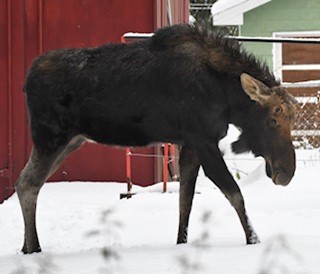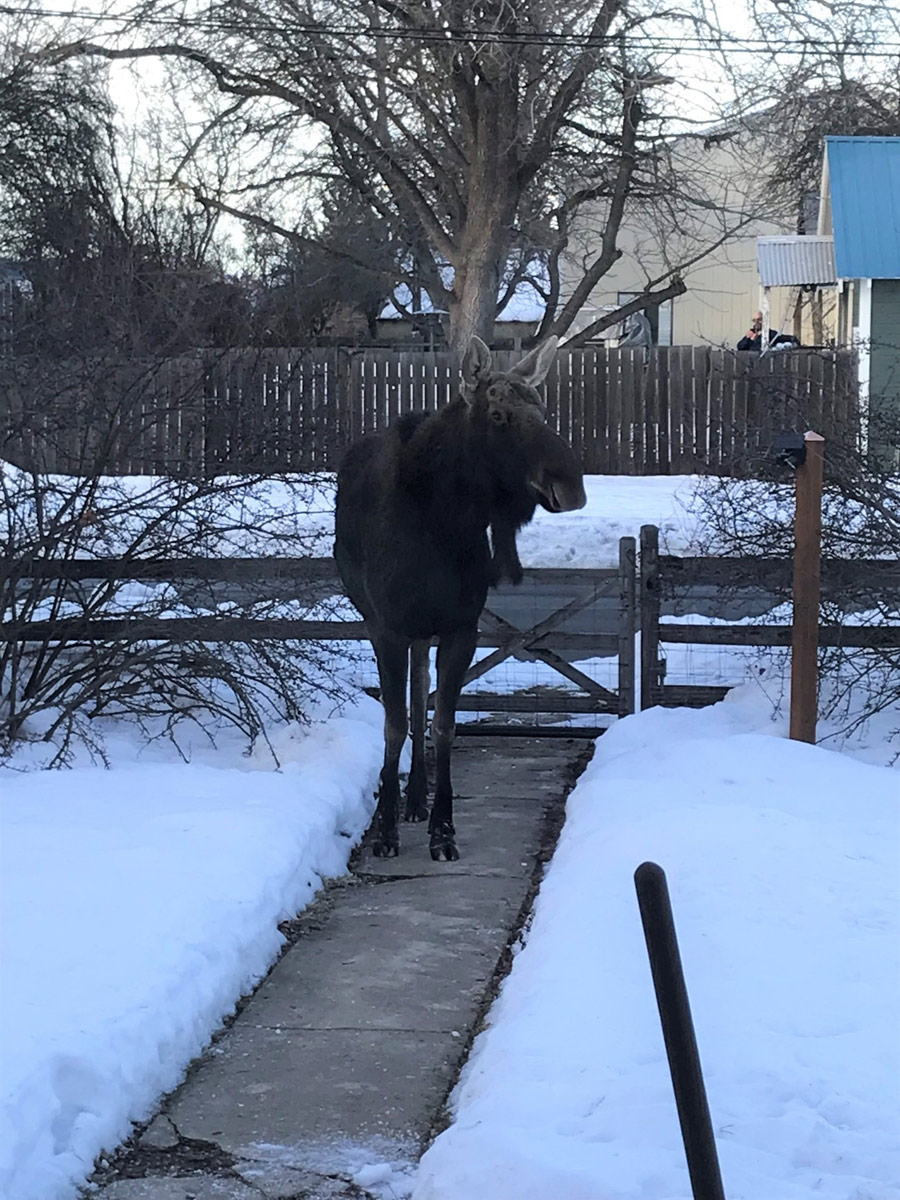There’s a Moose on the Loose in Downtown Coeur d’Alene
This story was written by the Our Gem Collaborative team for the CDA Press on Sunday, Feb. 6, 2022. Read the original article.
You might be witnessing more moose than usual visiting our urbanized areas and partaking in our tasty ornamental plants and shrubs this winter. Why have we seen such an increase lately? Of all the deer species, moose are the most reliant on browsing for forage. This means that they primarily target tree and shrub species as opposed to grasses. Moose prefer mixed forests where deciduous shrubs are abundant, but they also target forested wetlands where they can feed on riparian shrubs and aquatic plants. According to area biologists, moose and other hoofed animals often move to lower elevations during the winter to avoid the deepest snow and to take advantage of the milder conditions. These often just so happen to be the same areas that we choose to develop for our homes. As a result, we find them in our neighborhoods in the winter, where ornamental shrubs are readily available. Since food is scarce elsewhere, moose, who are already less wary than others in the deer family, will often even bed down in residential yards between meals. Wildlife biologists strongly encourage that humans avoid coming into contact with these big furry friends, take pictures from afar and not entice them with food.

So, what is the relevance of moose to the Our Gem Collaborative, usually focused on Coeur d’Alene Lake water quality? The wetlands that serve as important moose habitat also act as natural filters of nutrients, such as phosphorus, around fringes of the Lake, thereby preserving water quality.
Wetlands protect water quality, provide fish and wildlife habitats, store floodwaters and maintain surface water flow during dry periods. Wetlands can be thought of as “biological supermarkets,” providing great volumes of food that attract many animal species, including moose. Dead plant leaves and stems break down in the water to form small particles of organic material called “detritus.” This enriched material feeds many small aquatic insects, shellfish and small fish that are food for larger predatory fish, reptiles, amphibians, birds and mammals (such as our moose friends). Moose have the ability to biologically break down nutrients that help wetland habitats store carbon instead of releasing it into the atmosphere as carbon dioxide. This in turn enables wetlands to help moderate global climate conditions.

Some locals believe that the male moose recently sighted in Coeur d’Alene may be visiting from the Blackwell Island wetland complex south on Hwy 95. We hope that you all enjoy these beautiful visitors from afar and understand their importance in our watershed, as they are a part of the food web in which our ecosystems thrive.








